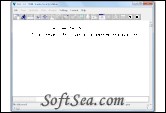|
TNT (Tree analysis using New Technology) 
|
Phylogenetic analysis made easy. TNT (Tree analysis using New Technology) is a program for phylogenetic analysis under parsimony (with very fast tree-searching algorithms), as well as extensive tree handling and diagnosis capabilities.
General:
1. Windows versions with GUI; all versions can be interactively driven with commands
2. a simple but powerful scripting language allows customization and "programming" of complex routines or simulations
3. Linux/Mac versions can run in parallel
4. Reads Nona/Hennig input data, as well as basic Nexus files.
5. Can export data and results easily to Nexus format
6. can overimpose legends on tree-branches (e.g. different support measures).
Optimality criteria:
1. analyses under pre-defined weights
2. analyses under implied-weights, either with standard or user-defined weighting functions (the latter including definition of clique-like weighting)
3. analyses under self-weighted optimization (i.e. dynamic weighting of character-state transformations)
4. standard (Fitch, Farris) characters, easily definable branched characters (=character-state trees), Sankoff (=step-matrix characters), continuous characters (from 0 to 65, with up to three decimals)
5. searches optionally collapse zero-length branches under different criteria (including SPR-TBR collapsing), or retain all distinct dichotmous trees
Search options:
1. exact ("branch-and-bound") searches applicable to relatively small data sets
2. random addition sequences plus TBR, applicable to medium sized data sets.
3. the fastest SPR-TBR swapping algorithms of any program
4. variety of search methods for large/complex data sets (sectorial searches, ratcheting and tree-drifting, tree-fusing and tree-hybridization)
5. recursive sectorial searches, using user-defined commands to analyze sectors
6. searches highly customizable via simple scripts
7. positive and negative constraints, flexibly defined
8. time-bound searches
9. can search for suboptimal trees (based on either fit difference and/or relative fit difference).
Tree diagnosis:
1. parsimonious mapping of character states
2. lists of synapomorphies
3. can summarize mappings or lists of synapomorphies based on sets of trees rather than one tree at a time
4. can display all most parsimonious reconstructions
5. counts of specific types of transformations
6. through the scripting language, it allows finding best state assignments with a fixed state at one or more nodes (for a given tree)
Tree comparisons:
1. strict, combinable components, majority, and frequency difference consensus trees
2. Semi-strict consensus supertrees, easy creation of MRP matrices (for subsequent supertree analysis under either parsimony or cliques)
3. finds taxa to prune to improve strict and combinable consensus trees
4. tree-distances: distortion coefficient, SPR-distances, agreement subtrees. Others can be easily calculated in conjunction with scripting language (e.g. number of "flippings", distance under MRP, triplets).
5. algorithms that help find taxa to prune to improve majority rule or frequency difference consensus trees, and group supports
6. easy comparisons of most similar groups between trees
7. comparisons of groups present in one tree but absent in another
Group supports, randomization:
1. generation of random trees (for testing in combination with scripts)
2. data permutation (alla PTP)
3. generation of random or simulated (jukes-cantor only) data sets
4. highly customizable jacknifing, bootstrapping, or symmetric resampling (searches can use any command defined by the user, or access scripts for analyzing resampled data sets in a special way)
5. Absolute and relative Bremer supports implemented natively (or easily with scripts)
Scripting
1. decision-making and control of loops
2. definition of variables (arrays with up to 5 dimensions)
3. easy access to internal variables to be used in decision making (number of taxa, trees, tree-scores, degree of resolution, branch lengths, tree-distances, etc.)
4. In Windows version, customizable dialogs
5. formatted output
6. easy access to taxon names, character names, branch-legends, etc., for use in formatted output
7. controls runs in parallel (Linux/Mac only), launching, monitoring, and controlling slave tasks.
8. tree-manipulations (including easy definition of branch-swapping routines)
9. allows manipulation of character-state reconstructions
TNT is a program for phylogenetic analysis under parsimony. It provides fast tree-searching algorithms, as well as extensive capabilities for tree diagnosis, consensus, and manipulation. This documentation explains some important things that are not immediately apparent (or cannot be done easily) from the menus themselves.
The license of this software is Freeware, you can free download and free use this calculator software.
